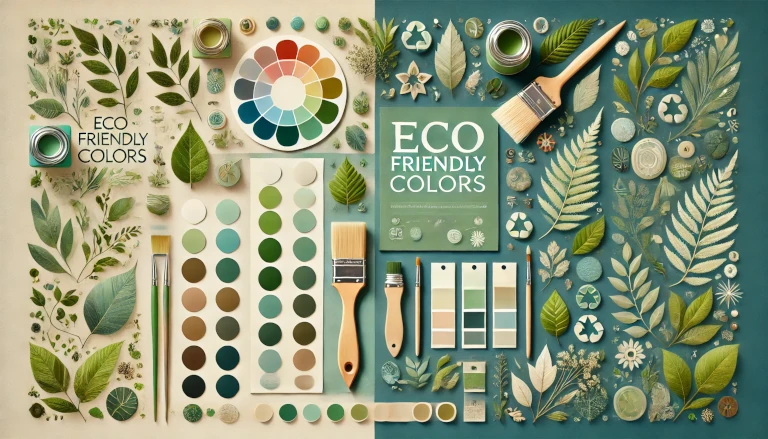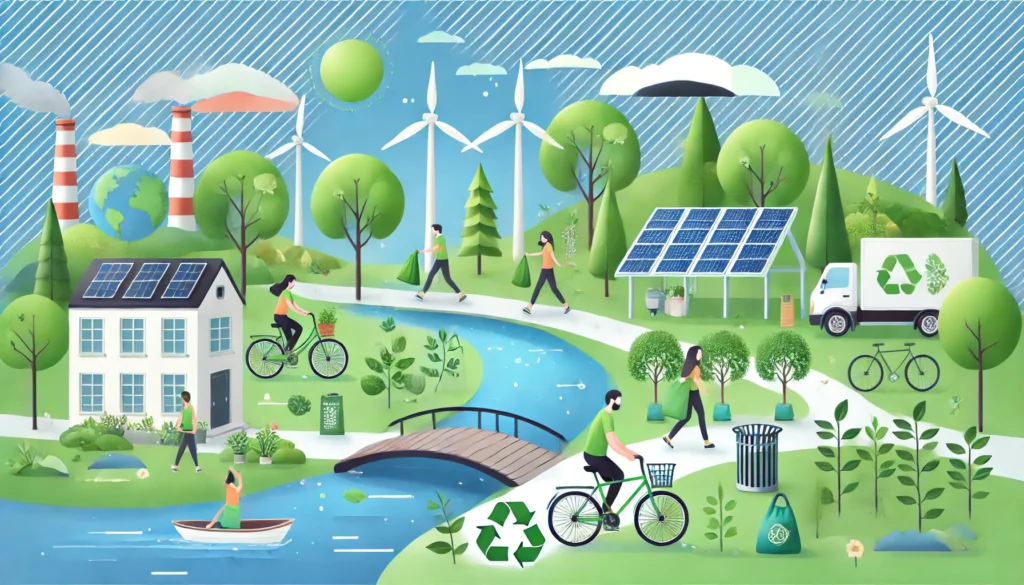With growing awareness about environmental sustainability, eco-friendly colors are becoming more popular as alternatives to synthetic dyes and paints. These sustainable colors are made using natural ingredients and eco-conscious processes, reducing environmental impact and providing a healthier alternative for people and the planet. But how exactly are these eco-friendly colors made?
In this blog post, we’ll explore the process of creating eco-friendly colors, from sourcing natural materials to the final dyeing and pigment production. Whether you’re interested in using these colors for DIY projects, home decor, or fashion, understanding how eco-friendly colors are made can help you make more sustainable choices.
What Makes a Color Eco-Friendly? 🌍🎨
Eco-friendly colors are made from non-toxic and biodegradable materials, often sourced from plants, minerals, and other natural elements. Unlike traditional colors, which may involve harmful chemicals and petroleum-based products, eco-friendly colors are designed to minimize pollution and reduce health risks associated with chemical exposure.
Here are the main components that make colors eco-friendly:
1. Natural Pigments 🌸🌱
Eco-friendly colors use pigments derived from plants, minerals, and sometimes insects. These pigments are extracted through sustainable processes and do not require harsh chemicals, making them safe for both people and the environment.
2. Non-Toxic Binders 🧴💧
In paints and dyes, binders are used to hold pigments together. Eco-friendly binders are typically made from natural oils, plant gums, or starches, which are biodegradable and non-toxic.
3. Low or No VOC Content 🚫💨
Volatile Organic Compounds (VOCs) are chemicals found in many conventional paints and dyes that contribute to air pollution. Eco-friendly colors often contain low or no VOCs, reducing indoor air pollution and making them safer to use indoors.
How Eco-Friendly Colors Are Made: The Process 🌿🔬
Creating eco-friendly colors involves several steps, from sourcing raw materials to processing pigments and producing dyes or paints. Here’s a look at the process:
1. Sourcing Natural Ingredients 🌾
The first step in making eco-friendly colors is sourcing natural ingredients. This includes harvesting plants for dyes, collecting minerals for pigments, or sourcing sustainable resources like clay and soil.
- Example: Turmeric is a popular plant source for yellow dye, while beetroot can be used for vibrant red and pink colors.
2. Extracting Pigments 🌈
Once the ingredients are sourced, the next step is to extract pigments. This process varies depending on the ingredient. For example, plant-based pigments are often extracted by boiling the plant material and then straining it to create a dye solution. Mineral pigments may be ground into a fine powder for use in paints.
- Example: Indigo dye, derived from the indigo plant, involves fermenting the leaves to release the blue pigment, which is then collected and processed into dye.
3. Mixing with Eco-Friendly Binders 🧴
After extracting pigments, they are mixed with eco-friendly binders to create paints or dyes. Natural binders can include ingredients like casein (a milk protein), linseed oil, or gum arabic, which help pigments adhere to surfaces without releasing harmful chemicals.
4. Processing and Filtering 🧪
The mixture is then processed and filtered to achieve the desired texture and consistency. Eco-friendly colors are carefully processed to remove impurities and ensure that they are safe for use. This step ensures that the colors are smooth and easy to apply, whether used as paints, inks, or dyes.
Common Sources of Eco-Friendly Colors and Pigments 🌍🌸
Eco-friendly colors can be made from a variety of natural sources. Here are some common ingredients used to create sustainable colors:
- Turmeric: Provides vibrant yellow shades and is often used in fabric dyes and paints.
- Beetroot: Offers rich reds and pinks, suitable for both food coloring and textile dyes.
- Hibiscus: Produces pink and purple hues, perfect for crafting and natural fabric dyeing.
- Charcoal: Used for black and grey tones, made from burnt organic matter like wood.
- Red Ochre: A natural mineral that gives earthy red and brown tones, commonly used in eco-friendly paints.
Benefits of Using Eco-Friendly Colors 🌿💚
Choosing eco-friendly colors has several benefits for both health and the environment:
1. Reduces Environmental Impact 🌱
Eco-friendly colors use natural, renewable resources, which minimizes environmental damage. Unlike synthetic colors, they do not release harmful chemicals into the air or water, reducing pollution.
2. Promotes Healthier Living Spaces 🏠💧
Since eco-friendly colors often contain low or no VOCs, they contribute to healthier indoor air quality. This is especially important for homes, schools, and workspaces where people spend a lot of time.
3. Supports Sustainable Practices 🌾
By choosing eco-friendly colors, you support sustainable practices in manufacturing and resource management. Many producers of eco-friendly colors also prioritize ethical sourcing and fair labor practices.
How to Incorporate Eco-Friendly Colors in Your Projects 🌈🖌️
Whether you’re painting, crafting, or dyeing fabrics, incorporating eco-friendly colors into your projects is simple:
- Choose Eco-Friendly Paints for Home Improvement 🏡
Select paints labeled as low-VOC or VOC-free, available in various colors and finishes, for your home decor projects. - Use Natural Dyes for Craft Projects 🎨
Experiment with making natural dyes using ingredients like onion skins or avocado pits for small DIY projects. This is a fun and eco-friendly way to add color to fabric and paper crafts. - Look for Sustainable Products 🛒
Many brands now offer eco-friendly paints and pigments made from natural sources. Research and choose brands that prioritize environmental sustainability and transparency in their ingredients.
Embrace the Beauty of Eco-Friendly Colors 🌿🌍
Eco-friendly colors offer a sustainable way to bring vibrancy and creativity into our lives without harming the planet. By understanding how these colors are made and choosing natural, non-toxic alternatives, we can make a positive impact on the environment and our health. Whether you’re redecorating, crafting, or simply exploring new ways to go green, eco-friendly colors are a beautiful and responsible choice.
Make the switch to eco-friendly colors today and take a step toward a more sustainable future.
Discover more from Green Ecosystem - Renewable Energy, Agriculture, and Environmental Sustainability
Subscribe to get the latest posts sent to your email.


